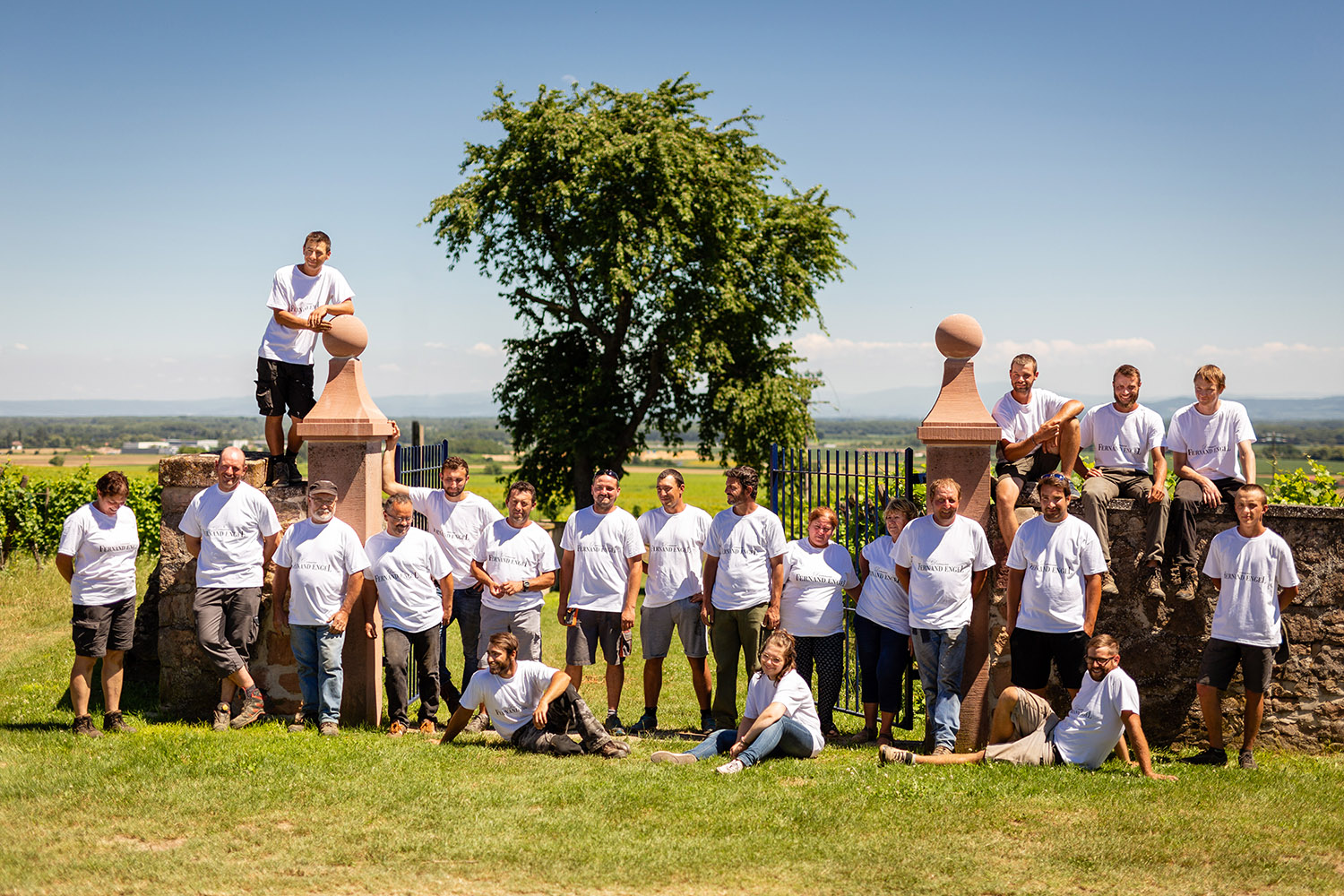
Savoir-faire, style
In the space of a generation, this 62 ha estate has become one of the most important organic farming estates in Alsace. The style of Engel wines explains this progression. This style is the reflection of the men; this potentiality evolves and develops over the years. It is a skilful mixture of work and experience. Because as the production of a wine reveals art, so patience, rigour and work allow the element of chance to be grasped.
The healthy, precise and straightforward wines that the Engel family strive to produce every year are the result of constant requirements. In the vineyard as in the cellar, each action is carried out with rigour and control, down to the very smallest detail.

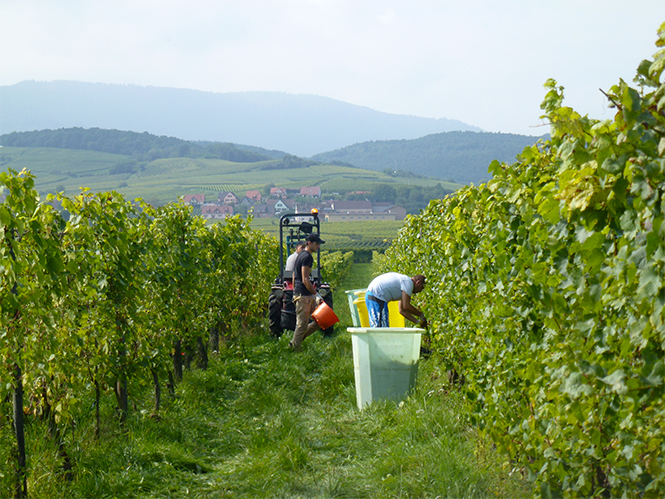
Throughout the year, about twenty people lavish all the care on the growing vine, they know each site, each vine stock.
They have been cultivating the soil and training the vines in the traditional way for decades, braving the cold, rain and heat. Most of the work is manual. Specific handiwork accompanies the various tasks that punctuate the seasons (pruning, tying, thinning shoots, lifting,...) until the harvest. Fortunately, some technical innovations accompany the men of the soil in these various tasks.

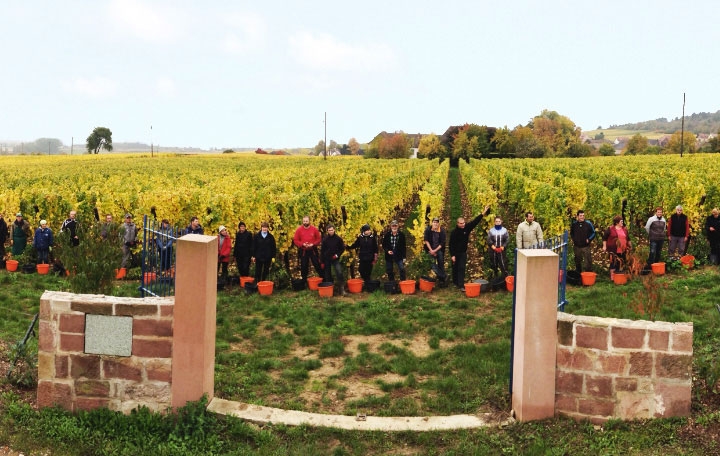
In September, the team grows, and more than fifty people host the grapes for several weeks. On the estate, each patch of land is harvested at optimum maturity, which is why the harvests are very long.
They begin some years at the end of August and sometimes end in December. Xavier, criss-crosses the paths, tastes the grapes and analyses them too, to choose the exact date of the harvest. Patience and precision guarantee quality. For several weeks, the faces sweat and smile, and transport the precious grapes to the cellar.

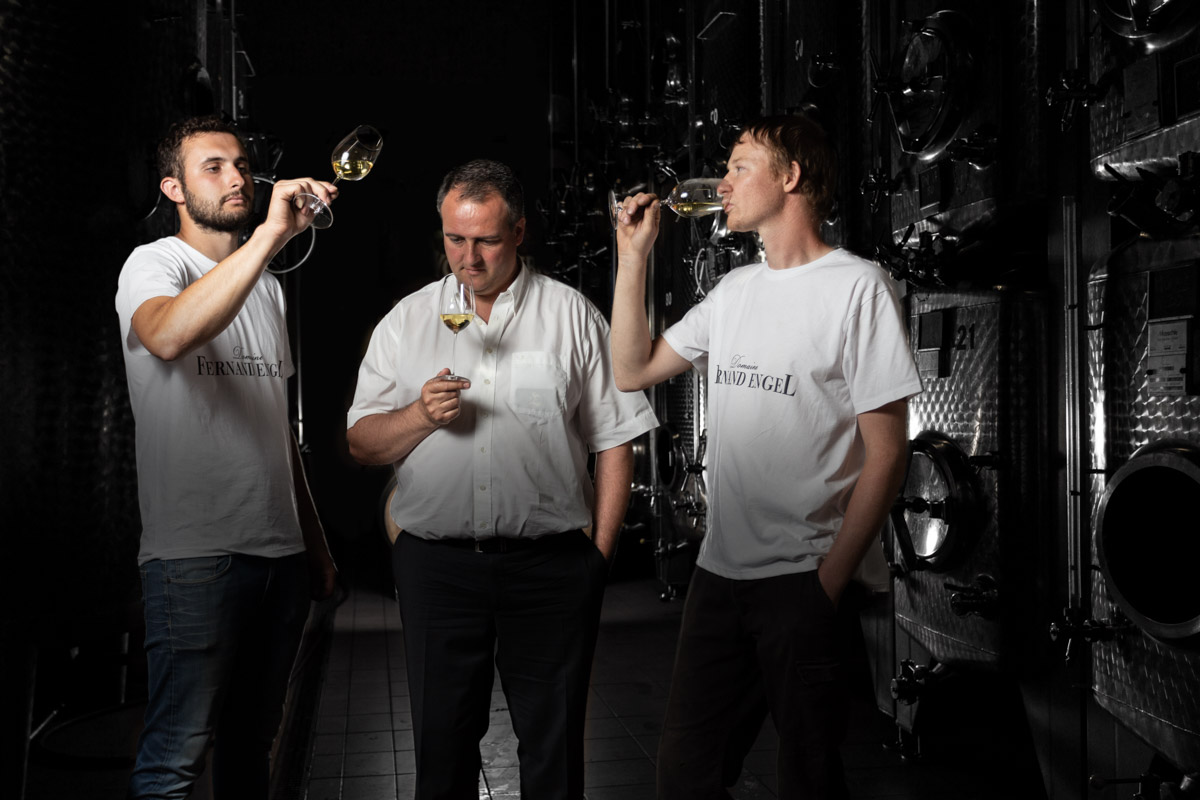
In the winery, the grapes from each site are pressed separately and gently over several hours. After a slow fermentation, the wines remain on their fine lees for several months to gain in complexity and richness.

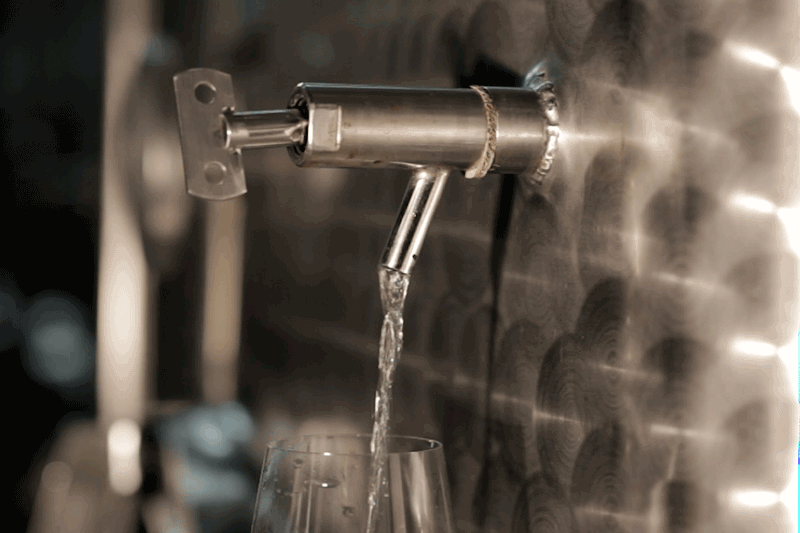
The estate has also incorporated the latest technical innovations to minimise interventions and any inputs and preserve the identity of each vintage (very rapid cooling of juices to cause tartaric precipitation and thus avoid chemical treatments, bottling of wine without contact with oxygen...).

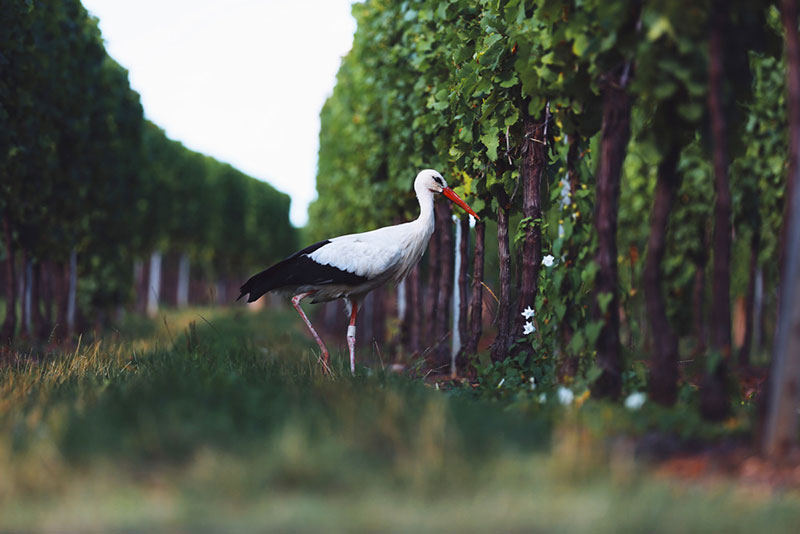
The winegrower is devoted to his vine, it is not only a profession, it is the commitment of a lifetime, because the vine is very demanding, it carries within it and vis-à-vis man, an original transversality. The vine gives us the best of itself only if we understand its multidimensional aspects, true reflections of our own history.
• Its aesthetic dimension has shaped our landscapes for centuries.
• Its environmental dimension, a multitude of animals find refuge there.
• Its cultural and historical dimension, it tells us our own history
• Its social dimension encourages social, cultural and generational mixing
On a daily basis, we build walls, set up refuges for wildlife (bees and birds, etc.), plant hedges, meet our colleagues, etc. It is in the respect of our environment that we modestly make our small contribution to history.
